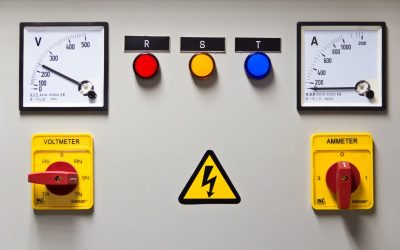A power transformer, unlike an output transformer is a fairly uncomplicated piece of equipment. Yet, whatever type, a transformer serves the purpose of transforming or changing an AC or alternating current signal (voltage) from level to another. It accomplishes this without changing frequency. Without any moving components, a transformer has a static classification. Like many discoveries before it, transformers did not come into existence without the involvement of several different individual. In most cases, these discoveries built upon previous findings to produce what we have today.
The Early History
Transformers have only been in existence for a couple of centuries. They date back to the 1800s. The initial discover of the property of induction in 1830 by Joseph Henry (1797-1878) and Michael Faraday (1791–1867) and the invention of the inductor coil by the Rev. Nicholas Callan (1799-1864) of Maynooth College, Ireland in 1836, provided the basis essential for the work of several scientists in the later 1880s. Among them were:
* Ottó Bláthy (1860-1939), Miksa Déri (1854-1938) and Károly Zipernowsky (1853-1942) who worked for the Ganz Company in Hungary
* Lucien Gaulard (1850 –1888) and John Dixon Gibbs (1834–1912), England: They created the step-down transformer
* Sebastian Ferranti (1864 –1930): He produces an early transformer, which he patented. He took Gaulard and Gibbs to court. They lost
* William Stanley (1858-1916)
Of these different contributors, it was Stanley, working for Westinghouse in 1886, who made the initial advances toward making the transformer a commercial venture. Even then, it was only with the help of such individuals as George Westinghouse (1846-1914), Albert Schmid and Oliver Shallenberger (1861-1898), that his work was successful. Their combined if separate efforts ensured production of transformers would become affordable for manufacturers to produce and capable of easy adjustment for implementation in usage.
It became a competition over the years to produce and perfect the power transformer. Westinghouse had purchased the rights for Gaulard’s invention, while Thomas Edison bought ZBD’s innovations.
Power Transformer: The Later Years
By 1890, power transformers were in use. The great hydro experiment at Niagara Falls relied on them to provide power across North America. In the years that followed its introduction commercially, engineers tinkered with various components. They worked on the design to increase efficiency. They augmented slowly the capacity of power transformers.
In 1950, the early work came to a culmination with the introduction of the 400KV electrical power transformer. From there, high voltage electrical power systems became the norm. Higher and higher kilovolt (KV or kV) class transformers came into play during the 1970s and 1980s. Today, engineers continue to work on the components of the power transformer to improve its ability to deliver what we need at the voltage we require, safely.



